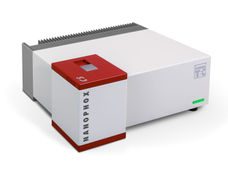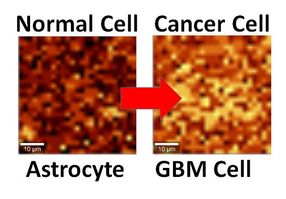Magnetic nanoparticles navigate therapeutic genes through the body
PTB measures the pinpointed transport of therapeutics for cardiovascular diseases
Health professionals send genes and healthy cells on their way through the bloodstream so that they can, for example, repair tissue damage to arteries. But do they reach their destination in sufficient quantities? Scientists of the PTB have developed a highly sensitive measuring method with which the efficiency of this therapy can be investigated: Small magnetic particles which are situated on the planted gene or on the planted cell can with the aid of an external magnetic field be specifically directed to the location of the damage. There the researchers determine, accurate to the picogram per cell, the quantity of the magnetic material – and thus also the quantity of the therapeutically effective genes or cells. In a joint study with the University of Bonn it became clear: By means of the magnetic method it is possible to dramatically increase the efficiency of the gene transfer in comparison to the non-magnetic method.
Magnetic nanoparticles can support or even enable gene transfer under clinically relevant experimental conditions. For the transduction of human cells, gene carriers were coupled to magnetic nanoparticles and dragged into the cells by magnetic field gradients. The efficiency of magnetic transduction turned out to be much higher than the nonmagnetic procedure. An additional welcome side effect is the "magnetization" of the cells after the incorporation of nanoparticles. This may enable the targeted transport of the cells to regions of interest. A closer look at the underlying mechanism of magnetic gene transfer was taken by the quantification of the magnetic material that was delivered to the cells. The required highly sensitive measurements in the range of a few picogramm per cell were made by PTB using magnetorelaxometry. The good correlation between measurement data and gene transfer encourages to use magnetorelaxometry for monitoring the efficiency of gene and cell transfer, possibly even in vivo.
Original publications: Combined targeting of lentiviral vectors and positioning of transduced cells by magnetic nanoparticles; PNAS 106 (1), S.44-49.
Most read news
Topics
Organizations
Other news from the department science
These products might interest you

NANOPHOX CS by Sympatec
Particle size analysis in the nano range: Analyzing high concentrations with ease
Reliable results without time-consuming sample preparation

Eclipse by Wyatt Technology
FFF-MALS system for separation and characterization of macromolecules and nanoparticles
The latest and most innovative FFF system designed for highest usability, robustness and data quality

DynaPro Plate Reader III by Wyatt Technology
Screening of biopharmaceuticals and proteins with high-throughput dynamic light scattering (DLS)
Efficiently characterize your sample quality and stability from lead discovery to quality control

Get the chemical industry in your inbox
By submitting this form you agree that LUMITOS AG will send you the newsletter(s) selected above by email. Your data will not be passed on to third parties. Your data will be stored and processed in accordance with our data protection regulations. LUMITOS may contact you by email for the purpose of advertising or market and opinion surveys. You can revoke your consent at any time without giving reasons to LUMITOS AG, Ernst-Augustin-Str. 2, 12489 Berlin, Germany or by e-mail at revoke@lumitos.com with effect for the future. In addition, each email contains a link to unsubscribe from the corresponding newsletter.



























































